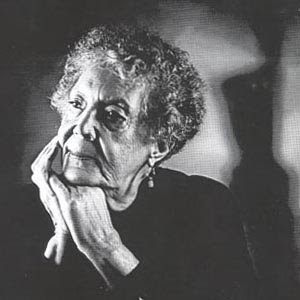1928/DVD 1999
Director: Carl Theodor Dreyer
Cast: Renee Maria Falconetti & others
The idea of what makes a woman hero dates back at least to female medieval mystics, among them Joan of Arc, the illiterate French peasant girl whose “divine voices” told her to unite France, assist in the crowning of the young Charles VII and expel the English invaders. For her trouble she was betrayed by French collaborators in 1431, turned over to a Church court, tried for heresy – there were 29 “examinations” combined with torture, during which she disavowed her voices but then recanted – and burned at the stake, all by the time she was 19 years old.
Every Catholic schoolgirl knows Joan’s story – as much frightening cautionary tale as feminist inspiration – though actually a number of cultures have legends or historical instances of young women who transgressed conventions of their time, dressed in men’s clothing and took up arms and leadership at moments of crisis, often to repel invaders. The Danish director Carl Theodor Dreyer’s 1928 film about Joan’s trial and execution is by no means the first cinematic treatment of "the maid of Orleans" – at least seven movies preceded his, the earliest in 1895 – though the Catholic Church did not declare Joan a saint until 1920. Ingrid Bergman played Joan twice – in Victor Fleming’s 1948 adaptation of Maxwell Anderson’s play and again in 1954 for Rossellini. Otto Preminger launched Jean Seberg’s career by casting her in his 1957 film based on George Bernard Shaw’s play (the screenplay by that great novelist of Catholic doubt, Graham Greene). Director Robert Bresson’s Joan film came out in 1962, and in 1997 Luc Besson cast Milla Jovovich in The Messenger, still-popular on DVD and featuring Joan in battle. The most recent effort seems to be the riveting 2003 Hungarian film Joan of Arc on the Night Bus, best described as a post-modern opera, which incidentally screened here in Syracuse several years ago courtesy of the Syracuse International Film Festival. This list is not exhaustive, but illustrates an enduring fascination with Joan.
But Dreyer’s film has a certain mystique attached, even in terms of the film’s survival in the world. Fire destroyed the original negative. Then his second version – reconstructed from outtakes – was lost to fire too; Dreyer died in 1968 believing this work was gone, though boot-legged, truncated versions survived. In 1981, a print of Dreyer's original was found intact under circumstances either bizarre or miraculous, depending on your point of view: locked in a janitor’s metal cabinet in an Oslo psychiatric hospital. Restored in 1985, this has been available since 1999 on an excellent Criterion Collection DVD, which contains more of this history as well as options to play the film in its original silent form, with commentary, or with composer Richard Einhorn’s majestic Voices of Light. Einhorn himself encountered Dreyer’s film by accident at the Museum of Modern Art while considering whether to compose something about Joan. He comments on the Criterion DVD that first watching the Dreyer film was like “walking down an ordinary street, turning a corner and without warning, you find yourself staring at the Taj Mahal.”
Dreyer stripped his story down to Joan’s trial, with no panoramic shots of battlefields or Charles’ court or the Rheims cathedral, no lush scenery, no mystical moments of Joan with her heavenly confidantes, no fabulous costumes for Joan in armor astride her white horse. His camera came in at odd angles on a stripped down set, creating disorienting, unsettling visuals, literally askew perspectives that match the sensory perception of someone exhausted and under stress, and evidence of a harsh daily existence in details like Joan's ragged, dirty fingernails.
The film is relatively short – just 82 minutes – and he strips the narrative down too. Dreyer relied on the actual ecclesiastical trial transcripts for Joan’s exchanges with her tormentors. Joan’s was a show trial, so when vain, hair-splitting judges nonsensically ask her how she knew it was Saint Michael who visited her, whether he was naked and whether his hair was cut, she is not outwitted. When they inquire in another trick question whether God hates the English, she answers that she doesn’t know about that but she does know he will drive most of them out of France, except for those who die there. You may not think about this as you watch the film, but afterward it occurs how like the scriptural Jesus she is in Dreyer’s portrayal – both the boy found holding his own with the scholars in the temple and the later, angrier Jesus who drives the money-lenders out. And it’s no coincidence Dreyer titles his film The Passion of…. For some, Gethsemane – where Jesus is perhaps most fully human, doubting his salvation, wondering if he can avoid his painful death, wondering if he can do more good alive, asking please to get out of this, agonizing – is what makes his story worth its salt. And in this portion of Joan’s story – when she allows herself to be convinced to save herself, only to draw back from that spiritual calamity as from a dizzying brink – Dreyer’s film is most unforgettable.
Dreyer found his lead in Renée Maria Falconetti, a stage actress of light comedies. She found his methods so aversive that – much like the singer Björk’s experience with another Danish director, Lars von Trier – she never made another movie. The critic Pauline Kael called Falconetti’s performance the finest ever filmed. A ways off the beaten track from the multiplex, this one’s worth the trip.
*******
This review is from the 9/24/08 issue of the Syracuse City Eagle weekly. Find The Passion of Joan of Arc at Netflix.com.

